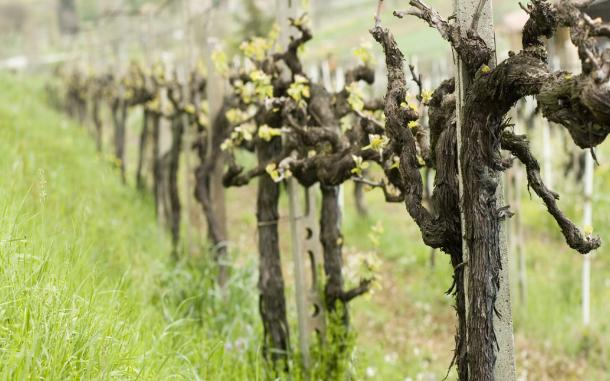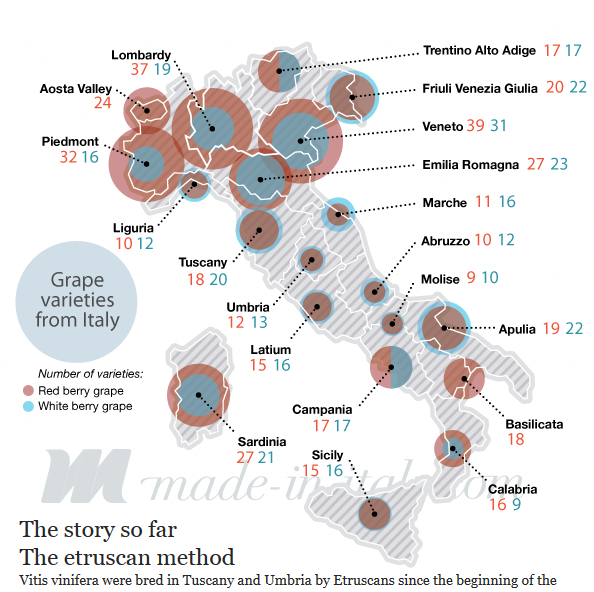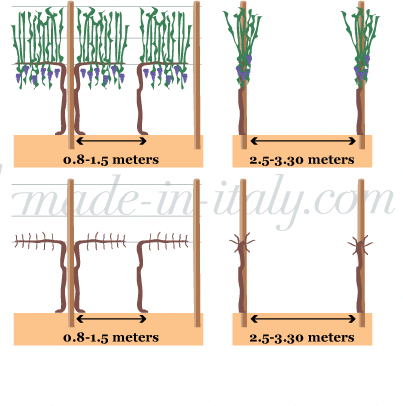Italian Viticulture: Tradition Vs. Innovation
Viticulture refers to everything that happens in the vineyard, from how the grapes are planted all the way to their picking and arrival at the winery for vinification. Italian winemakers are known to have a tremendous respect for tradition, and attention is given to the importance of indigenous grape varieties in preserving the identity and character of Italian wines. Nonetheless it is no longer unusual to see plantings of Cabernet Sauvignon and Chardonnay in Italian vineyards that yield sleek, modern wines. In recent years Italian producers have recognised that what makes Italy so special is its sheer diversity – not just its 370 grape varieties but also the diversity of its climates and landscapes.

The growing popularity of foreign grape varieties is often regarded as a reaction to the decline in indigenous varietals, whose names the global markets found hard to pronounce, and whose quality was often unreliable some 20 years ago, just before the wines of the New World started appearing on the shelves of wine merchants. However it seems like the Italian backlash is well and truly over and varietals like Primitivo and Sangiovese have never been so popular.
The choice of what grape to plant is usually defined by laws that dictate the varietals to be used to make wines eligible for DOC and DOCG status. The laws were introduced in order to encourage winemakers to focus on quality and not quantity in the vineyard as well as the winery. Just as the best and most expensive French wines are governed by legislation on yields per hectare and the distance between vines, Italy’s finest also adhere to strict regulations.
One of the problems that stems from the ubiquity of viticulture is that there is such a diversity of plantings, vine training and pruning methods in place – it is hard to define the “typical” Italian vineyard. Historical influences come from the Greeks and the Etruscans who first grew grapes in Italy. The Greeks favoured dense plants that were trained low and produced small yields of highly concentrated fruit. The Etruscans preferred high-trained vines that rested on naturally occurring vegetation, and they barely pruned the plants so that yields were high.
There is not a single solution that suits every vineyard – and the solution for the Italians has been to learn from the past and try to use the landscape and climate to their advantage. In the South and the Islands, where historically wines have been high in alcohol and low in acidity, the Etruscan system has been more effective, together with skilled vinification, in improving the balance of wines. In many places the Etruscan system has been modernised, so trellises have replaced the trees on which the vines rested. The introduction of the Casarsa method, which combines the Greek notion of training vines along wires, with the Etruscan high-trained vines at wide intervals, has made it possible in areas of high production for mechanisation in the vineyard. While mechanisation is impossible in many parts, like the steep slopes of Alto Adige, it has been the most significant change across much of the mainland.

Changes like these have ensured that Italy is a more efficient wine producing country that still retains all the traditions that makes its wines so unique in the global marketplace, demonstrating that history is as important as innovation in retaining and enhancing the global identity of Italian wine.
Italian Viticulture
The results of their dedicated research are arriving in wine shops around the world, and offer wine lovers a luscious range of flavours and fragrances unavailable from any other country.
A great variety
Depending on the vintage, modern Italy is the world’s largest or second largest wine producer around the world. But Italy is also the richest country for grape varieties: they are about 370, scattered in the territory and deeply influenced by differences in climate and landscape.

The story so far
The etruscan method
Vitis vinifera were bred in Tuscany and Umbria by Etruscans since the beginning of the first millennium BC. Etruscans fed vines on top of spontaneous vegetation and didn’t prune the plants.

Modern Viticulture : The Casarsa method
The most significant improvement from the ancient age in italian viticulture is the introduction of the Casarsa method, which provides the growing of two vines on the same pole and the horizontal development of the branches.

